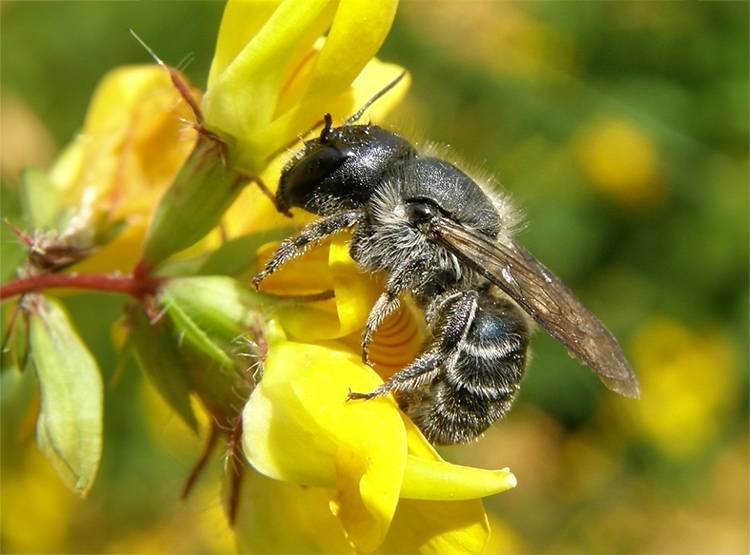Beautiful Plants For Your Interior
Common Blue Mason Bee
Scientific Name: Osmia caerulescens

Species: Common Blue Mason Bee (Bee – Solitary)
The Common Blue Mason Bee (Osmia caerulescens) is a solitary bee belonging to the family Megachilidae.
Conservation Status:
Thankfully, these bees are considered widespread and not currently facing conservation threats. Widespread in England and Wales but more common in the South of the UK
About:
Solitary and non-aggressive, these bees are excellent pollinators, particularly for early spring flowers. Unlike honeybees, they don’t live in hives.
How to Identify:
These bees can be identified by their large box-shaped head and the blue metallic lustre on their abdomen, which distinguishes them from other bee species.
Females are a stunning metallic blue with black pollen-collecting hairs, while males are smaller and sport a metallic green body.
Nesting:
These Mason bees are solitary nesters and often nest in pre-existing cavities such as hollow plant stems, woodpecker drillings, artificial nesting materials and abandoned beetle holes.
When to See:
The Blue Mason Bee is typically active between April to September when they can be observed foraging for pollen and nectar in gardens, parks, and natural habitats.
Distribution:
Common Blue Mason bee has a ‘Holarctic’ distribution (distributed across continents), extending into Europe, Asia, and North America, where it can be found in a variety of habitats including woodlands, meadows, and urban areas. However, their presence in North America might be due to human introduction.
Habitats:
This bee can be found in a range of habitats, look for them in sunny locations with plenty of flowers including gardens, orchards, meadows, and woodland edges, where they forage for pollen and nectar.
Did You Know Fact:
The Blue Mason Bee is gentler than honeybees and won’t sting unless severely threatened. In addition, the bee is an efficient pollinator and is often used as a managed pollinator for commercial orchards due to its exceptional pollination abilities.
